2015 Alfa Romeo 4C Vs 2005 Acura NSX

It was raining on the day that I fell in love with wedge shaped supercars. The halls in my elementary school stank of cleaning chemicals and the smell of books hung thick in library.
I remember because it was also the first day of the Scholastic Book Fare. You might have experienced the same thing, either as a child or a parent. Schools cart mobile cabinets made of metal in for a week packed with books that, for the most part, might as well be re-purposed toilet paper for all their literary value. It’s a shameless cash grab, but it’s also the first time I caught a glimpse of the Acura NSX in a car calendar. Be still my beating heart.
Driving a Childhood Idol
Almost two decades later I sat in a Starbucks south of L.A., incredulously sipping an Americano that I watched the barista dose with drip coffee moments earlier, but that’s Irvine for you because nobody thinks twice about buying high-priced horse apples.
I absentmindedly pecked away at my laptop, but focusing was futile because Jason Siu – AutoGuide’s photographer of the day – was due to arrive any moment with a 2005 Acura NSX on loan from Honda. Days this special don’t come often. Not even on the endless automotive writing buffet.
As luck would have it I arranged to be driving an Alfa Romeo 4C months prior. In other words, we had two mid-engine exotic cars to drive in Southern California.
In my mind, the Acura NSX was a lot like “that one party I left early” in college. You know what I’m talking about. Ten minutes after you settled up, gorgeous women with loose morals packed the bar and for some reason, the drinks were cheaper than usual. It’s the one night your friends will boast about long after male pattern baldness takes hold.
Well, the party is over and so is the NSX in much the same way. Acura cancelled it after the 2005 model year and people are still talking in hushed tones.
Compare Specs
| Vehicle | 2005 Acura NSX | Advantage | 2015 Alfa Romeo 4C |
|---|---|---|---|
| Engine | 3.2-liter V6 | – | 1.75-liter Turbo-4 |
| Transmission | Six-speed Manual | – | Six-Speed DDCT |
| Horsepower | 290 | NSX | 237 |
| Torque | 224 | 4C | 258 |
| Weight-to-power | 10.87 | 4C | 10.4 |
| Curb weight | 3,153 lbs. | 4C | 2,465 lbs. |
| Weight distribution | 40/60 | 4C | 41/59 |
If time machines were real, you could easily go back to the bar that night in my senior year to confirm that pints were still, in fact, $7.50 and the bodacious blonde my buddy bragged about was actually pushing 40 and overweight. That’s going to happen, but two days before my birthday I had the next best thing: a meticulously preserved NSX. I wanted to satisfy a burning curiosity; is the NSX really as hot as people remember or just the dumpy ‘gal from those stories?
Expectations vs Reality
Jason arrived and we drove to a dead end road near Irvine Lake, me in the 4C and he in the NSX. On the way, I couldn’t help but notice how old the long metal radio antenna and taillights look. The NSX is attractive in its old age, but it’s starting to get crow’s feet.
We traded cars minutes later and this is what I expected: surgically precise shift action from the six-speed manual, a throttle that is responsive and predictable in equal measures and razor sharp corner turn-in with chassis stiffness to match.
After being in service for almost 10 years, the transmission and engine seem just as refined and intact as any of Acura’s recent manual V6 vehicles. The engine pulls to its 8,000 RPM redline with beautiful urgency and it bellows a rich roar that intensifies as it spins faster and faster. Leaping from first to second gear is effortless, as are the remaining upshifts. But the real fun is in cycling backwards through the gear stack because the transmission is smooth enough and the throttle quick enough to make rev matching really, really easy.
Equipped with a six-speed manual, you get a 3.2-liter all aluminum V6 that makes 290 hp. That’s puny compared to a modern high output motor, but don’t assume that also means “slow.” There’s still more than enough power to break the law before you even begin to explore the limits.
Compared to cars being built today, the NSX has a low dashboard and is remarkably easy to see out of. It also has a cassette deck in the center stack that doesn’t come pre-loaded with Haddaway’s Greatest Hits, though it probably should because parts of the car become a painful love story.
The chassis in my car squeaked over bumps, the passenger side window doesn’t have one-touch functionality and the post-refresh clear headlights on the car I drove are starting to look yellow. For all the talk about how hard Honda worked to stiffen the chassis, it also feels surprisingly soft over cracked pavement.
That might not seem like a big deal until you remember that this thing carried an MSRP of roughly $90,000 and sat beside cars like the TSX and TL in Acura showrooms.
Meanwhile Dodge was selling the Viper GTS for just over $74,000 and more discerning drivers could get their pampered posteriors into a Porsche Carrera C4 for $74,156, which makes the tarted up Honda sports car seem like a ho-hum value proposition at best.
When it first arrived in 1991, Acura charged roughly $60,000 for its Ferrari fighter. That’s more than $104,000 in 2014 dollars. Hardly an apples-to-apples comparison when you consider the evolution of vehicle content over the past two and a half decades, but the point is that the NSX was always an ambitiously priced product. A decade later, the 2005 model would still be significantly more expensive than a 2015 Carrera S.
Then again that’s a purely theoretical scenario. In the real world you can find a well-kept copy for about $55,000. Provided the previous owner kept up with maintenance, it will also probably be uncharacteristically reliable for its segment.
Driving the Alfa
But even accounting for a the discount associated with being a decade old, I couldn’t help but wonder if it’s really worth the price people are asking. Conveniently enough, I traded keys with Jason once again and returned to the 4C.
To picture what driving a 4C is like, take all the impracticality of living an NSX and increase those points by at least 50 percent. It’s that bad (or good depending on how you think).
Getting in and out is an event because the doorsills are obnoxiously wide. The interior is glaringly bare and everything about it is loud. For example, the seatbelt and door chimes are more piercing than a fire alarm and then there’s the engine.
Even at idle it is impossible to ignore, but it morphs from a dull roar to being deafeningly loud under acceleration. That’s partially because it only displaces 1.75 liters, but makes 237 peak hp and 258 lb-ft of torque courtesy of a turbocharger cramming an ungodly 21.75 psi of boost into the cylinders like a mad Italian cook making foie gras. It makes the loudest induction noise of any factory car I’ve driven bar none. The exhaust crackles between gear changes as you snap from first to second and then into third.
Subtlety is not the 4C’s forte.
That’s partially because nobody in America knows what the hell Alfa Romeo is. Naturally, they assume you’re driving some sort of secret Lambo-Martin GT3 Superleggera that costs half a million bucks.
But you aren’t because the 4C starts at about $55,000 or roughly the same money as a used NSX. Things just got interesting.
For that price, you get a carbon fiber monocoque chassis, a powertrain, wheels, seats and not much else. There isn’t even a power steering pump, but it honestly doesn’t need one.
The Alfa Romeo’s steering reacts with exactly the precision and feedback that I hoped for in the NSX. With a curb weight of only 2,465 lbs, it doesn’t need gobs of power because it already feels goddam fast. There are three drive modes, of which the most aggressive is “dynamic” and in that setting it might as well be a tiny Italian rocket ship.
In fact, calling it a “rocket ship” is probably the best way describe driving the 4C. I’ve never fallen for a crabbier car than this one. You won’t want to drive it on a highway because at high speeds the intentionally uneven roads are a nightmare as are stop-and-go traffic jams. The radio is too poorly designed to cycle through stations and the center stack extends just far enough to cover the wires behind it. Forget armrests, there isn’t even a glove box.
The Verdict:
For all of its compelling driving dynamics – and they are legion – I would have a hard time taking a new 4C over a used NSX.
Acura NSX, Alfa Romeo 4C
LOVE IT
- Smooth linear power delivery
- Magnificent transmission
- Iconic design
- Arresting style
- Powerful acceleration
- Precise handling
LEAVE IT
- Lacks modern conveniences
- Inherent used car risks
- Dreadfully noisy
- Painfully stiff

Luke is an energetic automotive journalist who spends his time covering industry news and crawling the internet for the latest breaking story. When he isn't in the office, Luke can be found obsessively browsing used car listings, drinking scotch at his favorite bar and dreaming of what to drive next, though the list grows a lot faster than his bank account. He's always on <A title="@lukevandezande on Twitter" href="http://twitter.com/lukevandezande">Twitter</A> looking for a good car conversation. Find Luke on <A title="@lukevandezande on Twitter" href="http://twitter.com/lukevandezande">Twitter</A> and <A title="Luke on Google+" href="http://plus.google.com/112531385961538774338?rel=author">Google+</A>.
More by Luke Vandezande



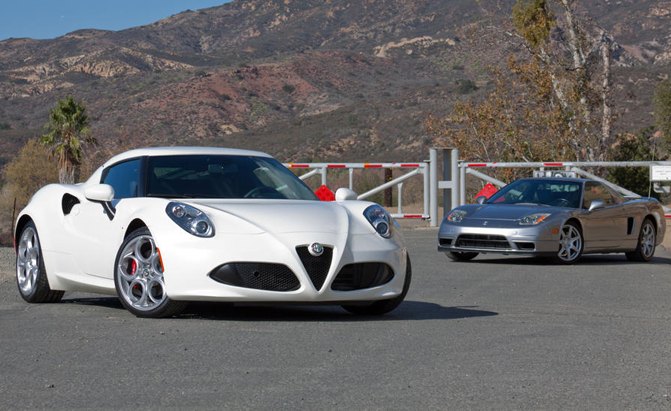
















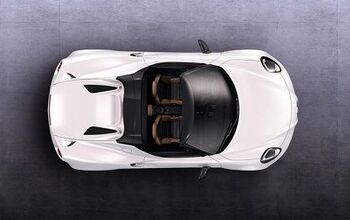
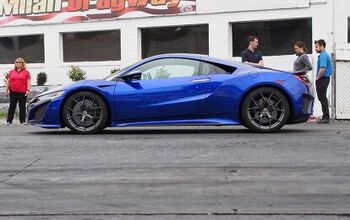



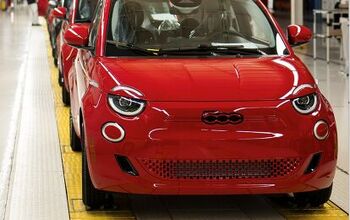
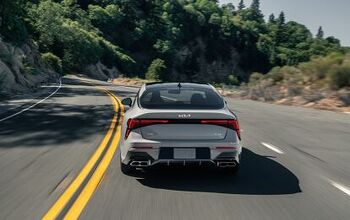
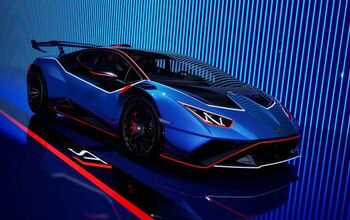


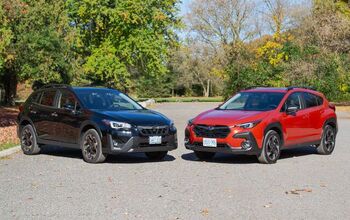

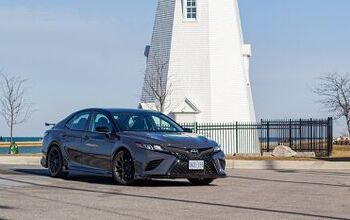


Comments
Join the conversation
I presently own an 88 spider which I have just rebuilt the engine. With about 70-80,000 miles It didn't need to have the crank turned. That in itself is amazing. I've owned a 1900c column shift, an 67 sprint, a 54 1600 sprint and a Giulietta spider. I am not crazy and I have the hospitals papers to prove it.
Just ludicrous that a car guy/ editor will actually make such comparison, clearly he is a Honda lover and anything out there does not compare.("Ferrari fighter" lol)